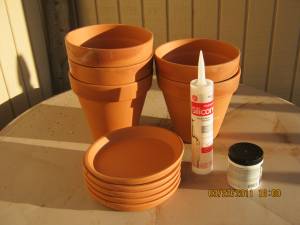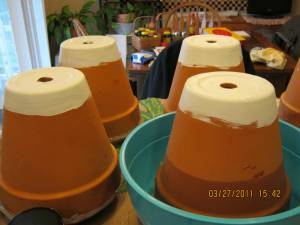More reading on my part regarding the abundance of chemicals in our lives. This time the culprit is plastics. When it was considered the newest miracle product of the 1950s, our grandmothers still largely bought and cooked fresh food: fresh produce, meat from the butcher, and stored left overs in those cute little glass refrigerator dishes that go for a premium at antique stores these days. Today, most of our food comes pre-packaged in plastic. And what we don’t consume at one meal, we store in plastic in our plastic refrigerators.
Plastic has changed. Different plastics serve different purposes and are made from different chemical resins. Some are stable, some are not and leach into our food. It’s also in our shampoo bottles, our flooring and our kids’ toys. Plastic is pervasive, but you can educate yourself and learn which ones to avoid.
We’re all familiar with the recycling code on plastic containers. That cute little green triangle with a number in the middle. That number indicates the kind of resin used to create the plastic.
 PET OR PETE (POLYETHYLENE TEREPHTHALATE), ALSO KNOWN AS POLYESTER
PET OR PETE (POLYETHYLENE TEREPHTHALATE), ALSO KNOWN AS POLYESTER
Typical uses: water and soft drink bottles, prepared salad and spinach containers
Health and environmental impact: intended for single use; plastic can break down and host bacteria; potential to interfere with reproductive hormones
 HDPE (HIGH DENSITY POLYETHYLENE)
HDPE (HIGH DENSITY POLYETHYLENE)
Typical uses: opaque milk jugs; cereal box liners; liquid detergent bottles; most shampoo bottles
Health & Environmental Impacts: low risk of leaching
Typical uses: plastic wrap, cooking oil bottles, toys, plumbing pipes, window and door frames, insulation
Health & Environmental Impact: known as the “toxic plastic”; can cause endocrine disruption, reduced sperm count, testicular atrophy and liver cancer
(Run Forrest, run!!!)
 LDPE (LOW DENSITY POLYETHYLENE)
LDPE (LOW DENSITY POLYETHYLENE)
Typical uses: plastic wrap, grocery, garbage and sandwich bags.
Health & Environmental Impacts: not known to leach chemicals
Typical uses: yogurt and margarine tubs, microwavable meal trays, fiber for carpets, wall coverings, vehicle upholstery
Health & Environmental Impacts: hazardous during manufacture but not known to leach chemicals
Typical uses: styrofoam cups, clamshell containers, foam meat trays, plastic cutlery, electronics packaging and insulation
Health & Environmental Impacts: eye, nose and throat irritation; stored in body fat (ooohhhh), can cause cancer to production workers, harmful to marine life (this type of plastic makes up the majority of the huge garbage islands floating in global oceans)
 PC (POLYCARBONATE), PLA (POLYACTIDE) AND OTHER PLASTIC NOT INCLUDED IN THE CATEGORIES ABOVE
PC (POLYCARBONATE), PLA (POLYACTIDE) AND OTHER PLASTIC NOT INCLUDED IN THE CATEGORIES ABOVE
Typical uses: baby bottles, some reusable water bottles, stain resistant food storage containers
Health & Environmental Impacts: BPA-containing polycarbonate causes endocrine and reproduction system disruption; impaired neurological functions; cancer; cardiovascular system damage; early puberty (OMG), obesity (crap!); chemotherapy resistance
Well, Forrest, I’m about to catch up with you. Good grief. In my disgust, I am looking for ways to relieve my household of the abundance of plastic. I quit drinking out of plastic cups a long time ago, but still have them around and my husband uses them all the time. Just about all the food I buy, even the organic potatoes and apples I bought today, came in plastic bags. The trays our treat-ourselves-once-a-week rib eye steaks come packaged in are absorbing plastics that are then stored in our body fat. And I’m really going to start checking for #7. Scary stuff.
So, in the spirit of less plastic, I splurged and ordered some reuseable produce bags to use at the grocery store instead of wrapping my fresh produce in plastic and then bringing it home. Here they are, from Amazon.
I bought 2 sets of 5 at $11 each. Perhaps a little pricey, but washable and should last a very long time. They were transparent enough so that the checker had no problem identifying the contents. Now I just need to find some alternative storage solutions for leftovers.
Comments anyone?
Keep it simple, ya’ll.










